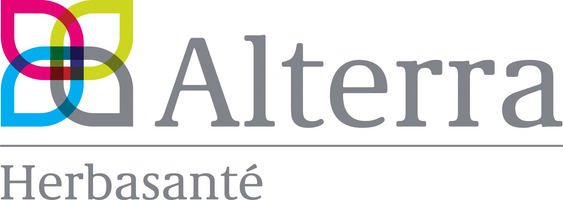
Silica, an essential for the skin
Did you know?
Silica is an essential trace mineral for healthy hair, nails, bones and arteries. It helps support both inner and outer beauty.
We know that silica is just as important as essential macrominerals like calcium or magnesium. Like calcium, silica adds strength and flexibility to the body’s structural support and much of its tissues.
As we age, the concentration of silica in the body decreases by 80%.
The issue of silica deficiency was discussed in the medical journal The Lancet as early as February 26, 1977. What creates this deficiency? One theory holds that modern diets based on refined foods such as white flour, refined sugar, and fast food, combined with devitalized and mineral-poor soil, are the cause.
Numerous benefits observed
in taking a daily liquid silica supplement

SKIN: Silica is a building block of the skin, contributing to its structure and elasticity. Numerous in vitro studies show the essential role silica plays in the formation of connective tissues.
Silica deficiency, especially after age 40, causes dryness and wrinkles in the skin. The dermis is noticeably improved with daily use of liquid silica supplements.
NAILS: Nails are complex protein structures, growing on average 4 to 5 mm per month. Brittle nails are one of the first signs of calcium imbalance and decreased silica. The same deficiencies are observed in degenerative diseases such as osteoporosis, arthritis and atherosclerosis. Early nail demineralization predates bone decalcification, which affects women over the age of 35.
Silica supplements can improve the situation in 2–3 weeks by strengthening nails, making them harder, shinier, and less fragile. (3-4)
HAIR: Studies have shown that silica-based therapy is effective in fighting hair loss and promoting regrowth. Note that blond hair tends to have the lowest levels of silica.(5)
CARTILAGE/JOINTS/BONES: The concentration of silica in the body has a significant effect on cartilage composition. A deficiency can lead to various joint problems. Decalcification is always preceded by a decrease in silica levels. Silica is essential for bone formation and increasing bone mass.(6-7-8-9)
TEETH: Silica is seldom acknowledged for its helping role in tooth remineralization and preventing tooth decay.6 A mouthwash with silica is beneficial for children with frequent cavities and for adults with enamel issues. It is also good for the gums.(10)
ARTERIES: Silica has inhibitory effects on coronary heart disease. The aorta contains 80 mg of silica per 1,000 g of dry tissue; elastin contains 240 mg and mucopolysaccharides, which are high in silica, contain 800 mg.
The aorta is made up of about 35% elastin fibres. Lower arterial concentrations of silica cause biochemical alterations in the basic substance (mucopolysaccharides) and elastic tissue, causing issues such as varicose veins and hemorrhoids. Increased arterial permeability is an aggravating factor for atheroma.(11)
The net benefit of silica for the cardiovascular system is that it reduces the permeability of the arterial wall by augmenting the endothelium’s intercellular cement and thickening the arteries’ elastic fibres.
A natural antidote to aluminum: silica! (15)
It’s true! Silica reduces aluminum absorption.(16)
Low dietary calcium can lead to aluminum deposits in the brain.(17-18)
However, with silica supplementation, no aluminum deposits are observed.
Dual use
A daily application of silica can rejuvenate your face. With daily liquid silica supplementation, you’ll enjoy double the benefits!

Safe and neutral in taste, our multifunctional liquid silica is highly effective. Incorporate silica into your daily routine—it is a crucial component of healthy skin and hair.
References:
1) Br J Nutr., septembre 2009, 102(6) : 825-834.
2) Arch Dermatol Res., avril 2007, 299(1) : 41-45.
3) Maroc Médical, 32 : 589-609.
4) Annales d’endocrinologie, 35 : 329-335.
5) Maroc Médical, 53 : 572-574.
6) Science, 1972, 178 : 619-621.
7) Nutr Bull, 2005, 30 : 222-230.
8) J Bone Miner Res, 2004, 19 : 297-307.
9) J Bone Miner Res, 2005, 20 : S393.
10) Maroc Médical, 53 : 572-574.
11) Biologie comptes rendus, 1961, N1.
12) J. Loeper, thèse soumise à la Faculté des sciences, 1965.
13) Atherosclerosis, 1979, 33 : 397-408.
14) La Presse médicale, avril 1966, 74 : 17.
15) Modern nutrition in health and disease, 9e édition, Baltimore, Willams & Wilkins, 1999 : 295-296.
16) Present knowledge in nutrition, 7e édition, Washington (DC), ILSI Press, 1996 : 353-377.
17) Nutritional biochemestry and metabolism with clinical applications, 2e édition, East Norwalk (CT), Appleton & Lange, 1991 : 247-248.
18) Chemistry in Britain, 1990 : 141-144.
19) The Lancet, 1994, 343 : 235.
22) Science, 1972, 178 : 619-621. 21. Nutr Metab, Londres, 2013, 10 : 37. 22. Symposium Ciba Foundation, Wiley, Chichester,
21) 140-158. - Harrision’s, Principles of internal medecine, McGraw Hill, 2012 - David Rakel, Integrative medecine, Saunders Elsevier, 2007 - British Journal of Nutrition (10/3/2009) 1-11 - Int J Cosmet Sci. 2012 Aug; 34(4):311-7.
